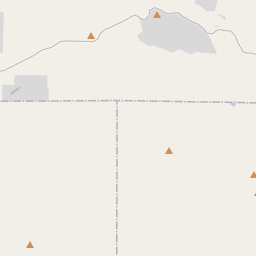Cow Camp Massacre on Hondo Creek
Historical marker location:






During the mid-1800s the Texas Hill Country was the site of many hostile encounters, some deadly, between pioneer immigrants whose permanent settlements ran counter to area Native Americans accustomed to unrestrained hunting and gathering. One such encounter occurred near this site on January 27, 1866. Three young men from the area, August Rothe, age 19, George Miller, age 16, and Hubert Weynand, age 12, left their homes near D'Hanis to recover stray livestock, an important task for area farmers and ranchers. They set up camp on Hondo Creek and began the "cow hunt." On the morning of the third day Rothe and Weynand were returning to camp when suddenly Miller appeared running toward them with eight Indians in pursuit. Unable to untie their horses in time to escape on horseback, both Rothe and Miller ran for their lives up a hill; Weynand attempted his escape on horseback. The encounter resulted in Miller's death, Weynand's capture, and Rothe's heroic escape. Weynand was never seen nor heard from again. A scouting party later found Miller's mutilated body but were unable to apprehend the attackers. Contemporary author A.J. Sowell wrote of these events in his book, "Early Settlers and Indian Fighters of Southwest Texas."
1994
As one of the most visible programs of the Texas Historical Commission (THC), historical markers commemorate diverse topics in Texas history, including: the history and architecture of houses, commercial and public buildings, religious congregations, and military sites; events that changed the course of local and state history; and individuals who have made lasting contributions to the state, community organizations, and businesses.
Texas has been a major oil-producing state for over a century. The first big oil discovery in Texas was the Spindletop field near Beaumont in 1901, which set off a massive oil boom that transformed the state's economy and made Texas one of the wealthiest states in the country.
In the 17th century, Spanish explorers arrived in the region, claiming the land for Spain. The Spanish established missions in the area to convert the Native Americans to Christianity and to further their control over the territory. One of the most notable missions was Mission San Francisco de la Espada, which still stands today and is a popular tourist attraction.
During the 19th century, the area that is now Medina County became a part of the Republic of Texas after it gained independence from Mexico. As more settlers moved into the area, the town of Castroville was founded in 1844 by colonists led by Henri Castro. The town became a major hub for German immigrants, and their influence can still be seen today in the town's architecture and cultural heritage.
Over the years, Medina County has experienced significant economic growth and development. The discovery of oil in the early 20th century led to an oil boom in the area, and agriculture has also played a significant role in the county's economy, with cattle ranching and crop farming being major industries.
Today, Medina County is a thriving community that celebrates its rich history and diverse cultural heritage. Visitors can explore the area's historical sites, such as the missions and historic downtown areas, while also enjoying the natural beauty of the surrounding countryside.
Medina County Timeline
This timeline provides a glimpse into the major events and milestones that have shaped the history of Medina County, Texas.
- 1841 - Medina County is established as a county in the Republic of Texas.
- 1842 - Castroville, the county seat, is founded by Henri Castro.
- 1846 - Medina County becomes part of the United States after the annexation of Texas.
- 1850 - D'Hanis, another town within Medina County, is settled.
- 1856 - Hondo is founded and becomes the new county seat.
- 1861-1865 - During the Civil War, Medina County supports the Confederacy.
- 1881 - The International-Great Northern Railroad is completed, boosting economic development.
- 1917-1918 - Many Medina County residents serve in World War I.
- 1920s-1930s - The Great Depression causes economic hardship in the county.
- 1942-1945 - World War II leads to changes in the local economy and military service.
- 1953 - Medina Lake is created with the construction of Medina Dam.
- 1998 - The historic Medina County Courthouse is restored after a fire severely damages it.